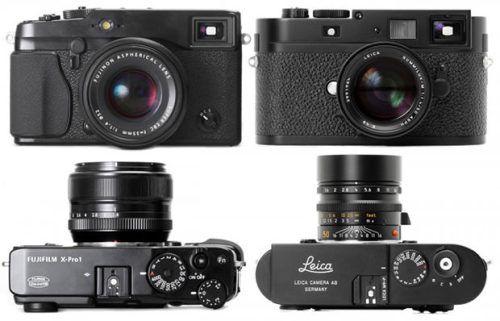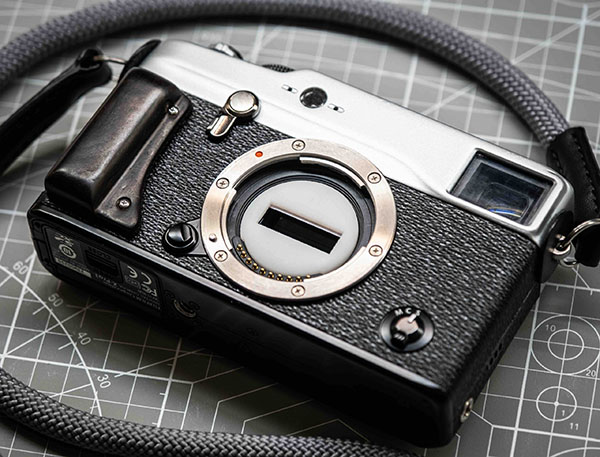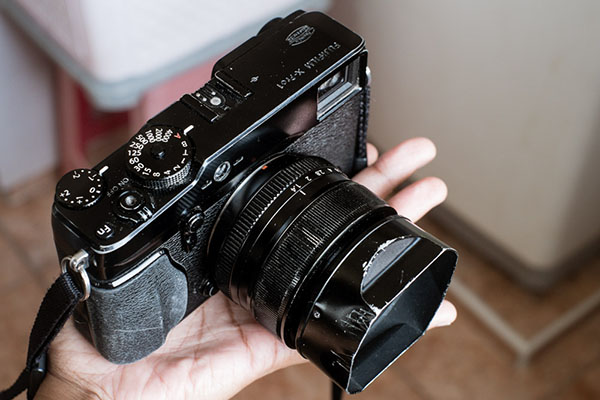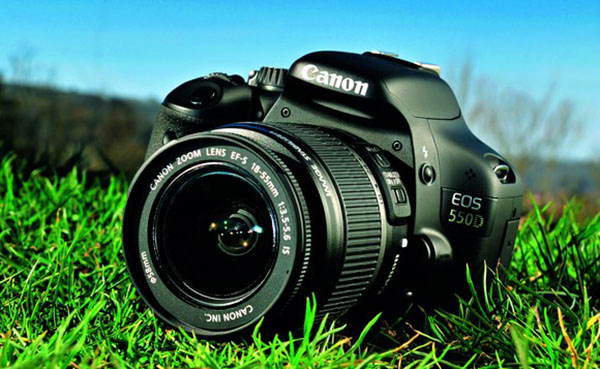Fujifilm is recognised as the world’s largest photographic company. Of course it is very much possible for a company who constantly listen to the customers’ voice on all aspect. The views and choices of customers are carefully fulfilled whenever there is a new launch take place. Fujifilm X-Pro has become a trend-setter which has arrived with new X lens mount and this enables the usage of Fuji’s all X range compact lenses. It is purely aimed at people who expect professionally and potentially high.
The newly added 16 megapixel APS-C X-trans CMOS sensor delivers excellent resolution which equals the result of a full frame sensor. X-Pro1 can be easily defined as an updated version of X100, but indeed we have plenty of features to be astonished. Worthy mentioning is a hybrid multi viewfinder; this eases the accessibility of switching over between optical and electronic viewfinder. Our choice is open to choose the perfect view which we are comfortable with. Thus, it is professionally well-built and well planned.
Key Features:
- 16MP APS-C X-Trans CMOS sensor
- High-end EXR Processor Pro image processor
- Newly designed colour filter array
- Coupled magnification hybrid optical and electronic viewfinder
- Analogue dials are recessed for shutter speed
- Exposure compensation rests on the top of camera
- Fujifilm designed exchangeable and completely electronic X lens mount
- Improvised control layout in the rear panel
- ‘Q’ button to access on-screen control panel
- Custom-style aperture rings and bit larger manual focus rings
- Maximum shutter speed 1/4000 sec
- 3.0 inch RGBW 1.23M dot LCD screen
Body and Design:
 X-Pro1 on the first look might remind us of the previous model X100. Even though the classic yet trendy body design suggests that we can be quite sure it has come out with a lot of welcoming advancements. It looks and feels solid and not a heavy one without the X mounted lens. If we attach any one of the three provided lenses it gets completely fit in the hand. Overall, it qualifies high in terms of body finish and controls.
X-Pro1 on the first look might remind us of the previous model X100. Even though the classic yet trendy body design suggests that we can be quite sure it has come out with a lot of welcoming advancements. It looks and feels solid and not a heavy one without the X mounted lens. If we attach any one of the three provided lenses it gets completely fit in the hand. Overall, it qualifies high in terms of body finish and controls.
The control layout is recessed as it is. To fulfill a professional view of choice, shutter speed on the top and exposure compensation dials are present at the right spot. Lens mounted aperture, manual focus rings, viewfinder mode selection lever at the front and shutter button for a customary cable release are placed exactly where we always look for. There is a noticeable change in the focus selector and seems like a rotatable switch which we notice in Fuji’s X10 series. Analogue ISO dial is missing this time too.
To talk about the rear portion of the camera, we come across lots of changes; in fact we can say it is at the most redesigned. Redesigning does not receive desirable response, because of the plastic control buttons on the back. The buttons are bit fussy and do not assimilate with the matte finish body design but the unbeatable finish makes us forget about everything. Some of the control buttons have become larger and been rearranged in a way which is apt for handling. Ultimately, Fuji’s X-Pro1 is a perfect catch for a professional photography. Surrounding dial is not present, to compensate this, a separate single dial is present.
And the traditional four-way controller is comparatively bigger and assisted with individual directional keys, the OK button as usual rests in the middle. On the left side of the screen, the drive mode control button is placed first and the metering pattern selection and AF area selection control follow. On the right side of the screen, there is a noticeable change in the controls. The common RAW option key is replaced with a Q button to access the on-screen control panel where all the other options rest. Fujifilm promises for a truly professional still camera and that might be the reason for not including an exclusive button for recording purpose.
As all of us know it is very much possible through manual setting via drive mode. On the camera’s top view, this is where it mostly resembles a lot like Fuji’s X100. Most of the controls are placed or recessed just like X100’s. The power switch at the right surrounds the shutter button and that is threaded in such a way for a totally outdated cable release. To avoid unintentional change in the setting both the shutter speed dial and the exposure compensation dial are located at the top right and in addition to that shutter dial is presented with a locking key in the middle.
Considering the handgrip in X-Pro1, it is just not enough in size though it serves the purpose adding some considerable grip to your fingers from slipping the camera. There is one more function which makes our setting our preferences much easier and that is, we can save around seven set-ups in the setting manual and when the time of changing the setting, we can easily access the quick menu where the already stored settings are displayed.

Features:
Hybrid Multi Viewfinder:
Fujifilm’s independently designed hybrid viewfinder has already launched in X100 and was appreciated by customers. The hybrid viewfinder has been developed in a way where it is very much capable of facing the interchangeable lenses. Immediate switching between the optical and electronic viewfinder is what everyone wonders.
The optical viewfinder is apt for viewing the brighter image and those who prefer details in particular such as focus confirmation, the level of exposure, white balance and of course the depth of image are advised to choose the electronic viewfinder. We do not have to do any setting changes, once we attach any of the XF lens, it automatically changes the frame size and magnification. Mounting XF series lenses one by one, we will definitely find unique beauty in the photography.
The new colour filter array:
The conventional Bayer pattern colour filter arrays have never been the choice of sensors as of Fujifilm is considered; they always designed and launched exclusive sensors for themselves. X-Trans CMOS have joined the exclusive series of sensors where the usual square grid pixel layout has been thoroughly redesigned.
The newly designed filter array would soon become the ultimate choice of sensor; the reason behind this is the optical low-pass filter is not required. For processing the image signal data and using the brilliant filter array require a powerful processor where they purposefully developed the EXR Processor Pro. So, this processor enables the highest performance of the X-Trans CMOS sensor.
Both together bring out the high speed image processing. The newly created filter array has RGB pixels rearranged in the sets of 6×6 pixels where each and every vertical and horizontal pixel set series are presented with R, G and B pixel. And this controls false colour production and improves higher colour reproduction.

X mount and XF lens:
The all new X Pro-1 mirrorless camera system is suitably supplied by the X mount. The completely electronic spear mount uses ten communication pins which run through the camera and the lens. The pins immediately transfer the needful information to the camera and combine them into a perfect instrument for photography.
The lenses can be released via contemporary aperture and focus rings which cannot be operated mechanically and obviously has no effect once the lens is removed from the camera. Surpassing E-mounts, X-mounts are highly potential. Mirrorless designed camera produces the shortest flange back distance of 17.7mm which is comparatively very shorter than the result of E-mounts.
The back focus distance from the sensor in the camera to the rear object exposed is extremely short. XF lens series are specifically designed for X Pro-1 and focused to result in astonishingly improvised resolution even in the edge areas of the frame. The fantastic EBC coating and the flawless glass finish on the lens and genuinely high quality metal used for barrel are all grabbed the attention of photographers. As we already discussed Fujifilm would become the trend-setter of interchangeable lenses.
Image Quality:
The image quality of the Fujifilm X Pro-1 is brilliant using the 18mm lens. There is no disappointment on colours output, dynamic range, the noise level and clarity in objects while shooting with XF lens. The JPEG images look absolutely natural in terms of colour reproduction and the in depth details of the elements. To fulfill the high-end expectation, X-Pro 1 produces high ISO pictures with greatly noise reduced. The newly added X-Trans CMOS sensor promises the resolution equals the full frame sensor.
Performance:
Fujifilm’s X-Pro 1 is considered to be one of the best professional cameras in terms of performance. Interchangeable lenses, X mount, EXR Processor Pro, and a lot more deserve the first place in the professional end.
Battery:
It has rechargeable and removable lithium-ion battery and has decent hours of stability.
Verdict:
Fujifilm X- Pro 1 is for sure a best professional investment. Slightly matte finish body design is the market requirement now and this would go viral. On the whole, it is a bit larger and heavier which is felt while holding. Menu system is fully aimed at professional photographers. Still, it does not put you down anywhere. All we have to do is to take up tour on the menu and settings once before starting. The built-in hot shoe is apt for shots under studio lights and flash units.
Technical Specification Table
| Manufacturer | Fujifilm |
| Model Name | X Pro-1 |
| Dimensions (H x W x D) | 88.1 x 139.5 x 42.5 mm |
| Weight | 450 g (Including battery and memory card) |
| Available colours | Black |
| Display | 3.0 inch RGBW LCD Screen |
| Focal length | 18mm, 35mm, 60mm |
| Expansion Slot | SD/SDHC/SDXC |
| Sensor Size | 23.6 mm x 15.6 mm |
| Sensor Type | 16MP APS-C X-Trans CMOS sensor |
| Effective Pixel | 16.3 million pixels |
| Shutter Speed | ¼ to 1/4000sec |
| Self timer | 2 to 10 S |
| Supported format | JPEG, RAW, RAW+JPEG Video : H.264 MOV combined with stereo sound |
| Hybrid Multi Viewfinder | Yes |
| Battery | Lithium-ion rechargeable battery |
| Interface | USB 2.0 High-Speed, HDMI mini connector |
| Accessories supplied | Battery with charger, shoulder strap, body cap, USB cable, Metal strap clip, Protective cover, Clip attaching tool, CD-ROM, User guide |
| Warranty | One year |
- Related post: Nikon D800 Digital SLR Camera Review




